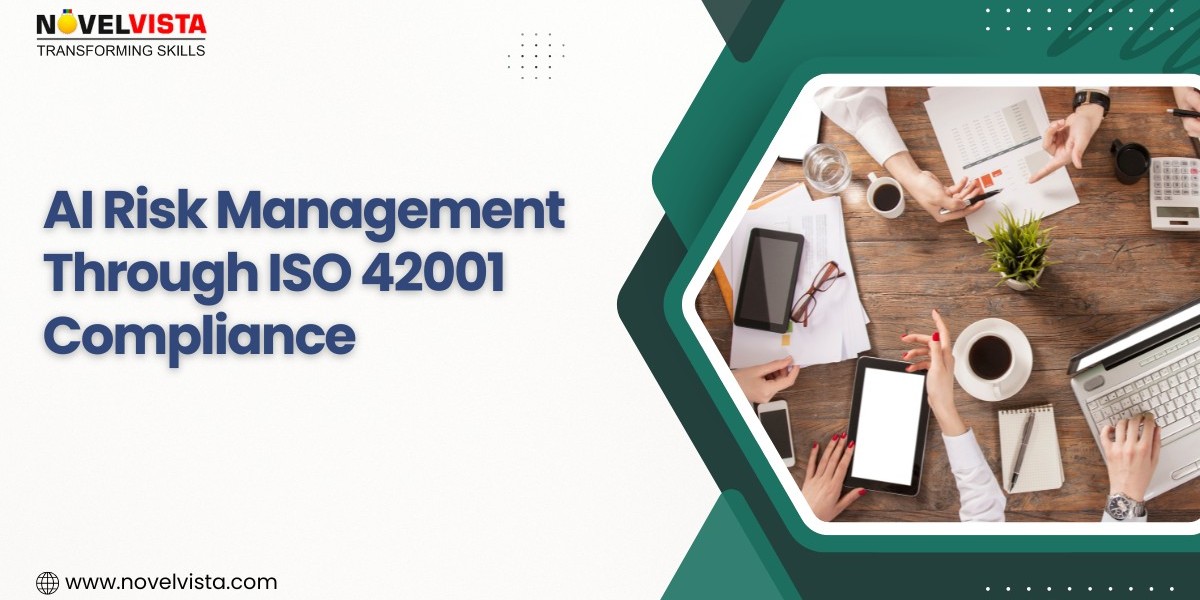As artificial intelligence (AI) continues to evolve and integrate into every industry, managing its associated risks has become a top priority for businesses and regulators alike. From data bias and algorithmic errors to security vulnerabilities and ethical concerns, the risks of AI are complex and far-reaching. To address these challenges, organizations are turning to international standards such as ISO 42001, which provides a structured framework for developing and managing an AI Management System (AIMS). This article explores how organizations can effectively manage AI-related risks through ISO 42001 Compliance.
Understanding AI Risk
AI systems differ from traditional software because they often involve machine learning, probabilistic models, and dynamic learning capabilities. This makes them harder to predict and control. Some common risks associated with AI include:
- Bias and Discrimination: If training data is biased, the AI system may produce unfair or discriminatory outcomes.
- Lack of Transparency: Many AI models, especially deep learning systems, operate as “black boxes” with little explanation of how decisions are made.
- Security Vulnerabilities: AI systems can be manipulated through adversarial attacks or exploited by malicious actors.
- Compliance and Legal Issues: AI-driven decisions must comply with regulations such as GDPR, which require explainability and accountability.
- Ethical Concerns: Use of AI in sensitive areas like hiring, lending, or law enforcement raises ethical dilemmas that go beyond technical performance.
To address these multifaceted risks, organizations need more than technical fixes—they need a comprehensive governance framework. That’s where ISO 42001 Compliance plays a crucial role.
What is ISO 42001?
ISO/IEC 42001:2023 is the world’s first international standard focused on managing artificial intelligence systems responsibly. It establishes requirements for an AI Management System (AIMS) that enables organizations to design, develop, and deploy AI in a way that is reliable, transparent, and aligned with societal values.
The standard adopts a high-level structure aligned with other ISO management systems (like ISO 27001 or ISO 9001), making it easier for businesses to integrate AI governance with existing compliance frameworks.
How ISO 42001 Supports AI Risk Management
1. Contextual Risk Identification
ISO 42001 requires organizations to evaluate the context of their AI systems—including stakeholders, external obligations, and potential impact areas. This helps in identifying specific risks that may arise from the design or deployment of AI solutions in a given environment.
2. Structured Risk Assessment
The standard mandates a risk-based approach to managing AI. Organizations must assess the potential negative impact of their AI systems throughout the lifecycle—starting from design and development to operation and eventual decommissioning. This includes consideration of bias, transparency, robustness, and safety.
3. Governance and Oversight
Through defined roles and responsibilities, ISO 42001 promotes accountability in AI system governance. It encourages organizations to establish clear lines of ownership and oversight, which is critical in preventing unmanaged or unethical AI use.
4. Mitigation Strategies
The standard outlines the importance of applying controls and safeguards to mitigate AI risks. This may include steps like human-in-the-loop systems, model validation, explainability techniques, fairness audits, and ethical reviews.
5. Monitoring and Continuous Improvement
AI systems need to be constantly monitored for performance and potential risks. ISO 42001 emphasizes regular performance evaluations and continuous improvement mechanisms to update systems in response to new data, feedback, or regulations.
Benefits of AI Risk Management via ISO 42001 Compliance
Implementing ISO 42001 provides several organizational benefits, including:
- Reduced Exposure to AI Failures: Early detection and mitigation of risks reduce the likelihood of costly failures or lawsuits.
- Increased Stakeholder Trust: Clients and regulators are more likely to trust AI systems backed by a robust management framework.
- Legal and Regulatory Alignment: The standard helps organizations stay compliant with emerging AI regulations like the EU AI Act or global data privacy laws.
- Ethical AI Development: ISO 42001 encourages ethical considerations in AI development, improving social acceptance and brand reputation.
Conclusion
As AI becomes more powerful and pervasive, so do the risks associated with it. Organizations cannot afford to take a reactive approach to AI risk management. Instead, they must adopt proactive, structured, and comprehensive frameworks like ISO 42001 Compliance. By implementing an AI Management System based on ISO 42001, businesses can navigate the complexities of AI governance, reduce risk, and ensure their AI systems are safe, transparent, and aligned with human values.







